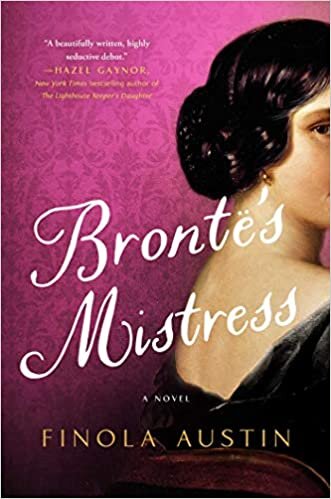It’s no secret that my generation—the much maligned millennials—is one made up of adept internet stalkers. Information about a new friend, a colleague, or that hot guy from a dating app is always just a Google search away, especially if the subject of your stalking has an unusual name, as I do. However, as a writer of historical fiction, I have to confess that, on an average Saturday night you’re much more likely to find me stalking...well, dead people.
In Fall 2016, I came across the woman, Lydia Robinson, who would become the protagonist of my debut novel, the old-fashioned way—in a book. I’m a long-time lover of all things nineteenth-century; in fact, I have a Master’s in Victorian literature, and the Bronte sisters (Charlotte, Emily and Anne) have always been among my favorite writers of the period. I was reading Elizabeth Gaskell’s biography of Charlotte, the first Bronte biography, when I stumbled upon her paragraphs about Lydia, the older woman rumored to have had an affair with Branwell, the dissolute Bronte brother. Gaskell described her as “wretched” and as “tempting [Branwell] into the deep disgrace of a deadly crime.” She even blamed Lydia for Branwell’s death and those of two of his three sisters! Somebody, I thought, has to have written a novel from this woman’s perspective. So what was the first thing I did? Reader, I Googled it.
I discovered that, while the ill-fated affair was mentioned in other works inspired by the Brontes, no one had thought to put Lydia and her perspective at the center of a novel. So began a year of intense (largely digital) research, as I stalked Lydia within an inch of her life—that is, I would have, had she still been living!
So how did I go about it? First, I read whatever I could find on the internet, sourced and unsourced, reliable and less so, about Lydia Robinson and the Branwell Bronte affair. I took notes on everything, especially when accounts differed (e.g. was Lydia’s second husband much older than her as many blogs claimed, or was in fact her peer?).
At the same time, I consulted Bronte biographies—the compendious and scholarly, like Juliet Barker’s The Brontes, which had great endnotes pointing me to primary sources, and the older biographies, such as Daphne du Maurier’s book on Branwell, which did not cite sources and felt in some ways closer to historical fiction. I also searched JSTOR for all journal articles that touched on the affair, and asked an academic friend to send me countless PDFs.
Digitized census records were another window into the world Lydia inhabited. Who were her servants and her neighbors? Where did her family live? Who were her friends? Using sites designed for family historians, and leaning on my mother, a family tree enthusiast, for support, I built up a sprawling web of knowledge that went far beyond what Bronte scholars had focused on. (Lydia’s second husband was her age FYI.)
As luck would have it, a Yorkshire carpenter, George Whitehead, who lived near Lydia and her family, had kept four diaries (of births, deaths, marriages, and sundries) recording events in the local area. These had been published locally in the 1990s, but, thanks to the wonders of Amazon, a secondhand copy was soon winging its way to me in New York. I remember sitting in a Manhattan tapas bar, feverishly recording gems from this book, between mouthfuls of calamari. Bronte academics had mentioned rumors of a gardener uncovering the illicit affair, but now I knew who this gardener was, his name, how many children he had, where and when he died.
I could have stalked my growing collection of dead people forever, but I limited myself to a year of research. Then I had to start writing. And it was a joy! Part of the novel felt written for me, because of the spreadsheet of dates and details I’d compiled. I drafted the novel that became Bronte’s Mistress in under six months, before flying to England to do some more research on the ground.
There, I visited archives, graveyards, and the grounds of Lydia’s old house (sadly destroyed, though the building where Branwell slept is now a private home). And every step of the way, I was aided by my digital preparations. I’d emailed the local vicar, who introduced me to amateur historians, and the school, which now stood on the site of Lydia’s home, in order to win admittance. I’d emailed the Bronte Parsonage Museum so I could look at the Robinson Papers, which included eighteen letters penned by my protagonist—Lydia herself.
The internet is often thought of as being very much of the “now,” but my digital literacy, learned from years of watching silly cat videos, sharing memes, and, yes, stalking with abandon, has been my window to the past. Digitization of records is the best thing that’s ever happened to historical fiction, and, as I know from the book I’m working on next, there are so many gems of stories out there, just waiting to be found.
Finola Austin, also known as the Secret Victorianist on her award-winning blog, is an England-born, Northern Ireland-raised, Brooklyn-based historical novelist and lover of the 19th century. Her first novel, Bronte’s Mistress, was published in 2020. By day, she works in digital advertising. Find her online at www.finolaaustin.com.


